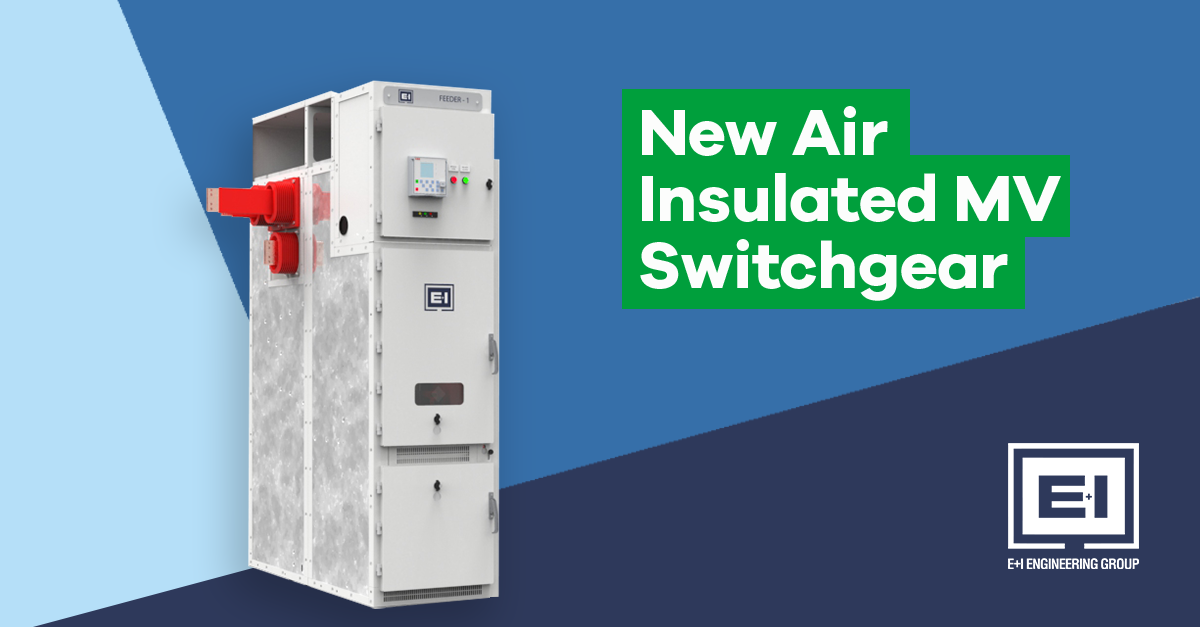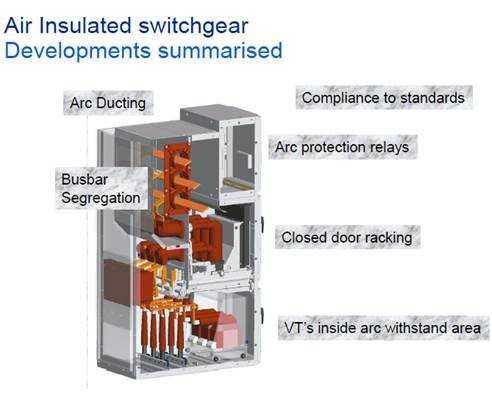In general, switchgear has a long track record of being both safe and reliable, posing a low threat of failure provided it has been installed, maintained and operated correctly. Whilst switchgear failures are a rare occurrence, the consequences can often be catastrophic due to high levels of voltage present. When a switchgear fault does arise, this poses a threat not only to the continuity of power but also to human safety, as the exposure to chemical gases and high voltage levels can put operators at risk of electric shock, burns and can even result in fatalities. For this reason, it is imperative that steps are taken to improve safety in medium voltage switchgear to ensure human life is adequately protected. Due to the high voltage levels present within medium voltage switchgear, it would be impossible to eliminate all risk of potential hazards. However, there are a range of technologies and designs that have been implemented into E+I Engineering New MV Switchgear product to significantly minimise the risk of switchgear faults and the threat posed to human life.
.jpg?width=6536&name=E%20%20I%20Engineering%20-%20Photography%20By%20Bernard%20Ward%20-%20DerryPhotos-0001%20(2).jpg)
- Arc flash reduction technologies
Arc protection relays are used to detect overcurrent and other abnormal functions within MV switchgear. The protection relay measures output from sensors and prompts the circuit breaker to operate when a set of predefined limits have been exceeded, indicating a potential arc flash. Whilst protection relays are a standard feature in MV switchgear, it is important to note that all protection relays are created equal and care should be taken to ensure the correct protection for your system is chosen. E+I Engineering’s new medium voltage switchgear product gives customers the opportunity to choose from a wide range of protection relays to ensure each individual system receives the right level of protection.
Vacuum interpreter technology is the most safe and reliable method for preventing arc faults within medium voltage switchgear. This technology involves a vacuum chamber that houses all current carrying contacts, therefore when an arc faults occurs it will be confined within the arc chamber of vacuum where a high dielectric strength between the contacts allows for the arc to be safely extinguished and prevents the arc from re-establishing.
As previously stated, it is not feasible to eliminate all risk of arch flash within switchgear. However, arc ducting can be used to minimise the impact if an incident does occur. Switchgear can be installed with a duct system to extract hot gases, burning particles and other arc flash by-products away from the switchgear, minimising the risk to anyone in a close vicinity of the switchgear
2. Operational Access
Switchgear failures are most likely to occur during or shortly after switchgear operation, putting the safety of the operator at risk. Therefore, it is imperative that switchgear is designed with the safety of the operator in mind. Mechanical interlocks should be put in place to ensure the switchgear system satisfies a certain set of conditions before operators can carry out a specific action, eliminating the chance of human error when working with such high levels of voltage.
Closed door racking involves using a remote racking device to disengage and isolate components from the live power supply before enclosure door is opened. The remote racking device is handled by maintenance personnel and rotated to rack a circuit breaker away from the live busbar system without opening the switchgear enclosure. As the components are de-energised from outside the arc flash protection boundary, maintenance can be carried out without risk of electrocution due to an internal arc flash.
3. Separation
The purpose of busbar segregation is mainly to allow safe access to the internal parts of the switchgear to operational personnel and to minimise the impact of any faults that occur within the busbar on the rest of the switchgear components. As the busbar is housed within a separate insulated compartment, faults that occur in the busbar will remain confined in the place of origin and be prevented from spreading through the switchgear and causing injury to personnel.
Withdrawable switchgear design is often preferred due to the visual separation achieved upon removal of the functional units. The main advantage of this is that operators can be certain that once the breaker is withdrawn the system becomes voltage free, this allows mechanically skilled maintenance workers to minimise their exposure to any electrical risk when working on live circuits.
E+I Engineering’s new air insulated withdrawable MV switchgear range provides customers with one unique and adaptable switchgear solution that can house either ABB or Schneider circuit breakers interchangeably – Giving the end user ultimate flexibility, with front access withdrawable voltage transformers in the 12kV and 15KV products. The range is manufactured across our 3 vertically integrated facilities in Europe, UK, USA and Middle East and is engineered in line with both IEC and UL certifications making it a truly global product.
As E+I Engineering have sole control over the supply chain, greater quality control can be achieved throughout the production process, resulting in a more reliable and efficient product for the end user. Additionally, this arrangement cuts down lengthy lead times allowing project timelines to run as smoothly as possible. The new MV switchgear range completes E+I Engineering’s power distribution offering, allowing our customers to benefit from a more streamlined project process, wherein they can now work with one expert supplier to fulfil their entire power distribution requirements.


.png)
